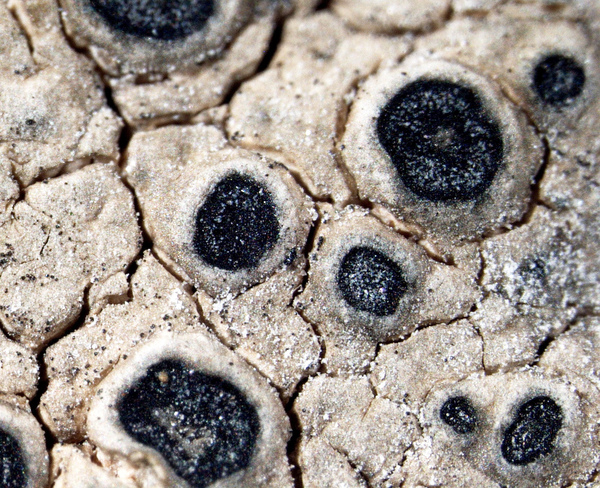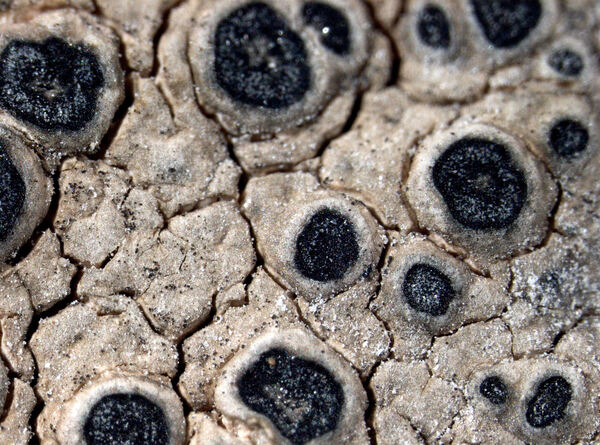Aspicilia supertegens Arnold
Verh. zool.-bot. Ges. Wien, 17: 567, 1877.
Synonyms: Aspicilia prinii B. de Lesd.; Lecanora leucostoma H. Magn.; Lecanora supertegens (Arnold) Zahlbr.; Oxneriaria supertegens (Arnold) S. Y. Kondr. et L. Lőkös
Distribution: N - Frl (Tretiach & Hafellner 2000), TAA, Lomb.
Description: Thallus crustose, episubstratic, continuous to rimose, rarely distinctly areolate, 0.4-0.8 mm thick, smooth, whitish, pale grey or grey-brown, sometimes with a violet tinge, often delimited by a black prothallus, forming well-delimited orbicular patches. Cortex granular-inspersed; medulla white, I-; algal layer not extending below the hypothecium. Apothecia lecanorine-aspicilioid, immersed in the thallus, 0.3-1.5(-2) mm across, usually irregular in outline, with a concave to finally flat, black, epruinose disc and a thin, often indistinct thalline margin. Epithecium greenish to olive-brownish, N+ emerald green; hymenium colourless, 115-140 µm high, I+ blue turning reddish; paraphyses submoniliform, the apical cells to 3.5 µm wide; hypothecium colourless, inspersed with oil droplets. Asci 8-spored, cylindrical-clavate, the thin outer coat K/I+ blue, the wall and apical dome K/I-. Ascospores 1-celled, hyaline, broadly ellipsoid, (15-)17-22(-25) x 10-14(-16) µm. Conidia thread-like, slightly curved, (17-)25-40 x c. 0.5 µm. Photobiont chlorococcoid. Spot tests: cortex and medulla K-, C-, KC-, P-. Chemistry: aspicilin.Note: a boreal-montane to arctic-alpine, perhaps circumpolar, variable lichen found on lime-free but base-rich rocks, often on mica-schist in humid situations (near brooks, melting snow, etc.), with optimum near and above treeline; probably restricted to the Alps in Italy.
Growth form: Crustose
Substrata: rocks
Photobiont: green algae other than Trentepohlia
Reproductive strategy: mainly sexual
Commonnes-rarity: (info)
Alpine belt: very rare
Subalpine belt: rare
Oromediterranean belt: absent
Montane belt: extremely rare
Submediterranean belt: absent
Padanian area: absent
Humid submediterranean belt: absent
Humid mediterranean belt: absent
Dry mediterranean belt: absent

Predictive model
Herbarium samples
Growth form: Crustose
Substrata: rocks
Photobiont: green algae other than Trentepohlia
Reproductive strategy: mainly sexual
Commonnes-rarity: (info)
Alpine belt: very rare
Subalpine belt: rare
Oromediterranean belt: absent
Montane belt: extremely rare
Submediterranean belt: absent
Padanian area: absent
Humid submediterranean belt: absent
Humid mediterranean belt: absent
Dry mediterranean belt: absent

Predictive model
| Herbarium samples |
 Index Fungorum
Index Fungorum
 GBIF
GBIF




